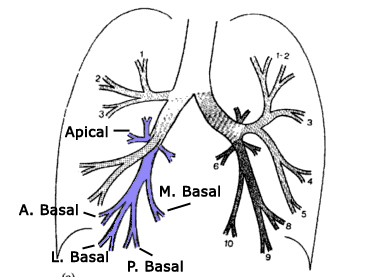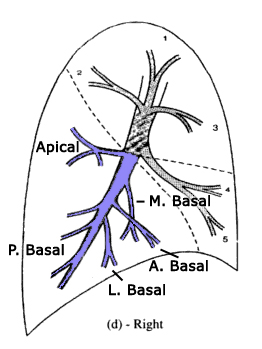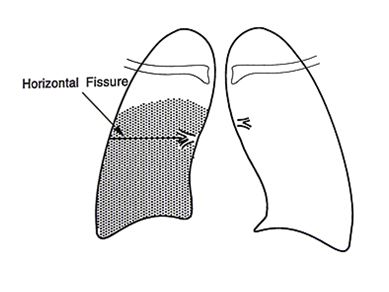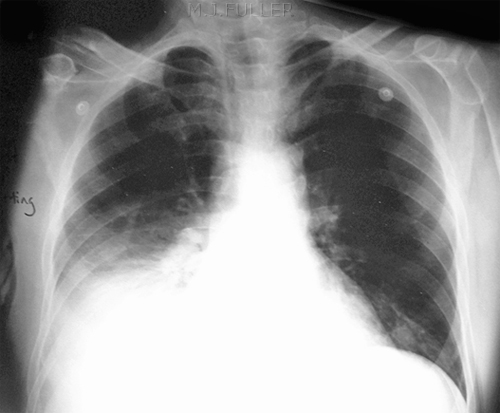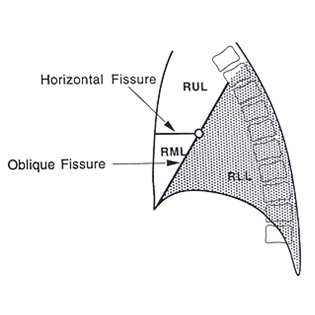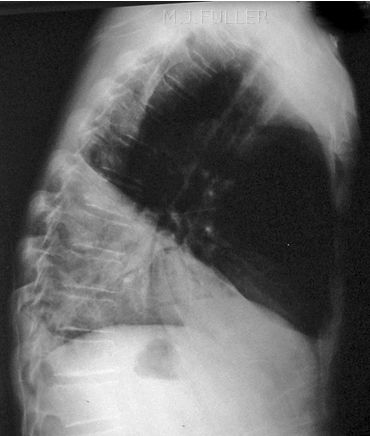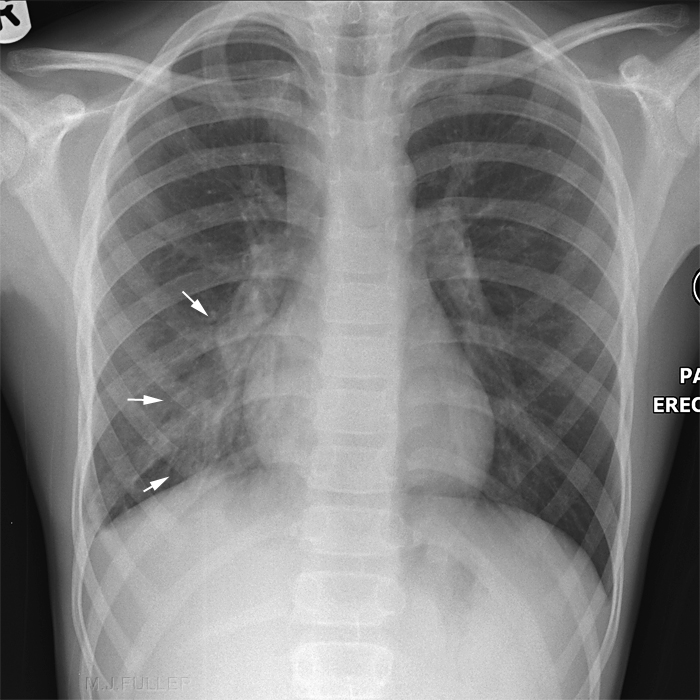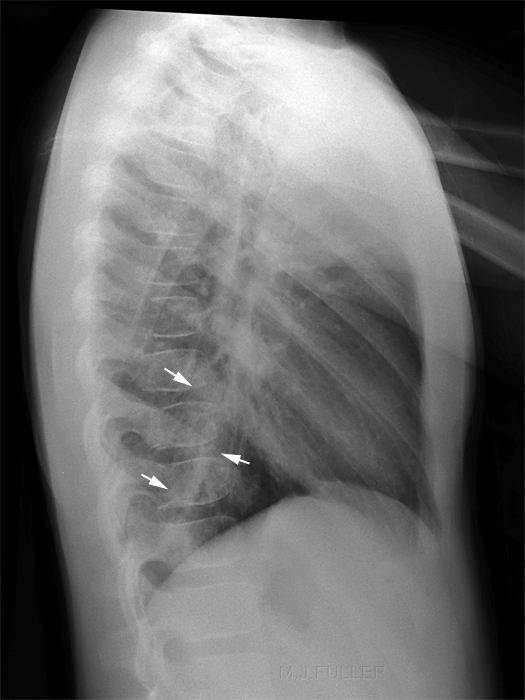Right Lower Lobe Consolidation
Introduction
Right Lower lobe (RLL) is a relatively common site for consolidation and can be missed if a lateral view is not included in the series.
The Meaning of the Term Consolidation
One of the unfortunate aspects of the term consolidation is that its meaning can be different depending on who is using the term. When a clinician uses the term consolidation he/she is usually referring to a consolidation associated with acute pneumonia. Thus, the term consolidation and pneumonia have very similar meanings and are almost used interchangeably.
Strictly speaking, the term consolidation does not imply any particular aetiology or pathology. Acute pneumonia is the commonest cause but not the only cause of consolidation. ( other causes include chronic pneumonia, pulmonary oedema and neoplasm). Thus when a radiologist has reported a chest X-ray examination and notes the presence of consolidation he/she is simply stating that some of the long airspace has been replaced by a fluid.
Notes on Consolidation
- Refers to fluid in the airspaces of the lung
- Consolidation may be complete or incomplete
- The distribution of the consolidation can vary widely. A consolidation could be described as “patchy”, “homogenous”, or generalised”.
- A consolidation may be described as focal or by the lobe or segment of lobe affected
Loss of Visualisation of the Right Hemidiaphragm
It is widely considered axiomatic that the loss of visualisation the right hemidiaphtragm is a sign of RLL disease. Felson (<a class="external" href="http://www.amazon.com/Chest-Roentgenology-Benjamin-Felson/dp/0721635911/ref=sr_1_2?ie=UTF8&s=books&qid=1252240078&sr=1-2" rel="nofollow" target="_blank">Chest Roentgenology, W.B. Saunders, 1973, p38</a>) has challenged this contention on the grounds that the right hemidiaphragm is widely variable in its shape and could be obliterated by middle lobe disease in some patients.
The Right Lower Lobe Anatomy
adapted from <a class="external" href="http://books.google.com.au/books?id=Bif0zpmEWtAC" rel="nofollow" target="_blank">By Fred W. Wright Radiology of the Chest and Related Conditions: Together with an Extensive Illustrative Collection of Radiographs CRC Press, 2002</a>The right lower lobe is comprised of five pulmonary segments. It is a large lobe and will provide varying patterns of consolidation depending on which segments are involved.
adapted from <a class="external" href="http://books.google.com.au/books?id=Bif0zpmEWtAC" rel="nofollow" target="_blank">By Fred W. Wright Radiology of the Chest and Related Conditions: Together with an Extensive Illustrative Collection of Radiographs CRC Press, 2002</a>Note that consolidation of the apical segment will not result in loss of the diaphragmatic outline.
Further information on lung anatomy here
Plain Film Appearances of Lung Consolidation
Plain Film Appearances of RLL Lung ConsolidationRadiological appearances common to all lobes are:
1.Abnormal lung opacity2.Increase in the size and number of lung markings3.Loss of clarity of the diaphragm on the AP and/or lateral views4.Loss of clarity of the heart border on the AP and/or lateral views5.Air bronchogram lines6.Loss of the normal darkening inferiorly of the thoracic vertebral bodies on the lateral view7.Opacification of the lung behind the heart shadow or below the diaphragms
Case 1
... back to the Applied Radiography home page
